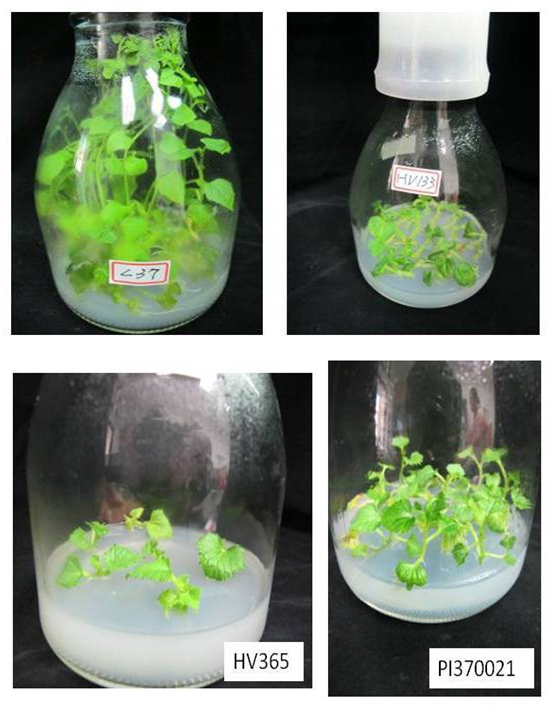 Home > Achievement > Research Project Summary Report > 2017 year > Develpoment of potyvirus resistant germplasm for melon Home > Achievement > Research Project Summary Report > 2017 year > Develpoment of potyvirus resistant germplasm for melon |
Develpoment of potyvirus resistant germplasm for melon
Many melon cultivars are susceptible to papaya ring spot virus-W type infection which suppresses growth of plants, resulting in decrease of yield and quality. The other cultivated species of melon are also lack of antiviral property and inducing virus resistance from wild relatives is a possible strategy to overcome virus threats in melon. Horn melon strain PI 292190 is known to has a single dominant resistance gene against PRSVW.In this project, protoplast fusion technique is used to refer to the previous research conditions to achieve interspecific hybridization. But we failed to reproduce the previous results. The reasons may be that the selected mesophyll tissue is not suitable for the regeneration and the improper composition of the culture medium. The test parameters need to be adjusted in further study.
▲Fig1. Plantlets from different varieties (lines) grown
in tissue culture status to supply leaf material for
protoplast isolation.
▲Fig2 .Leaves of horn melon strain L37 were cutting into pieces and digested with
enzyme solution for 16 hours. The protoplast cells were collected by filter and
low-speed centrifugation method.


